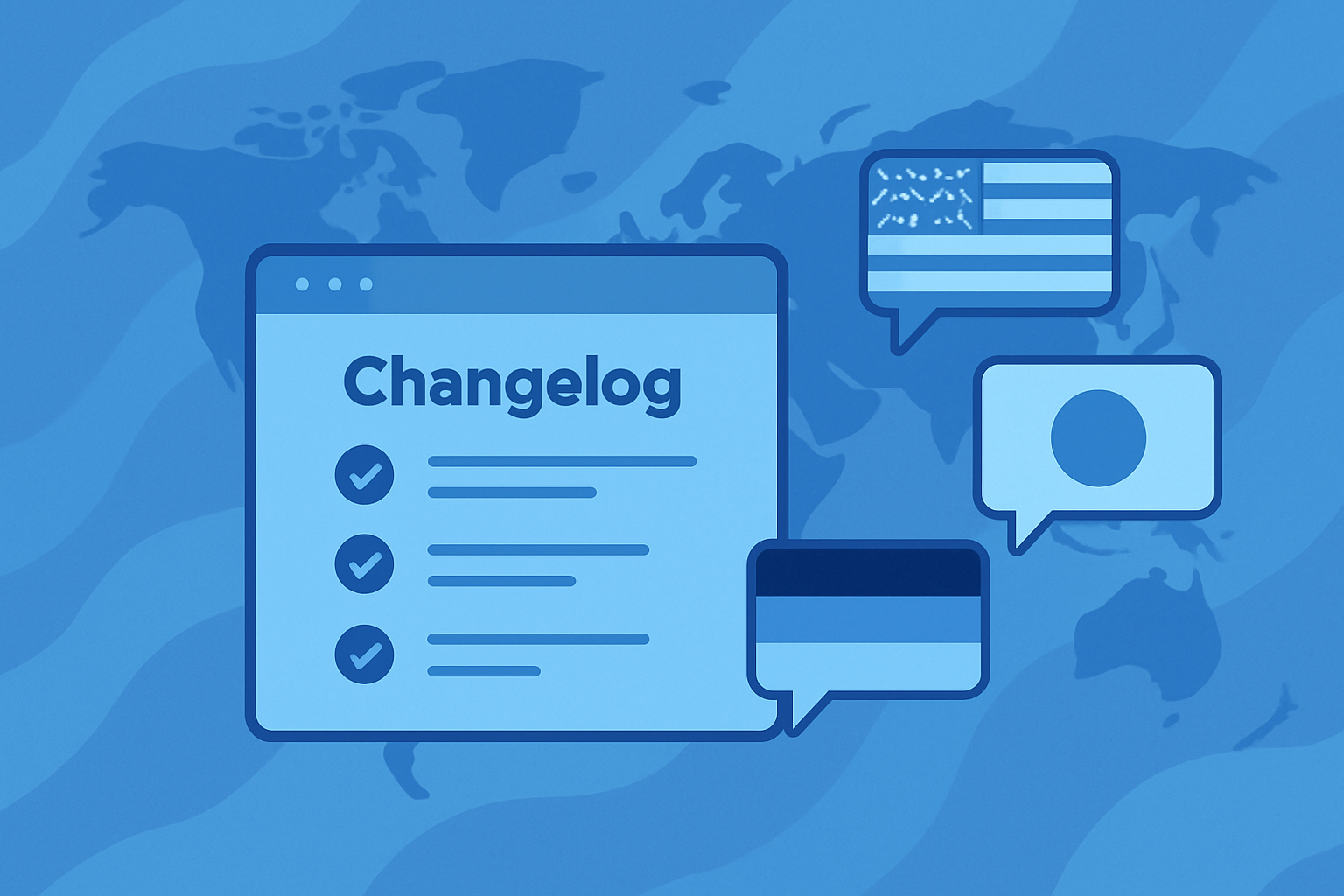Key Takeaways
- Changelog design matters for feature adoption, user satisfaction, and brand perception.
- Prioritize visual hierarchy, responsive design, and accessibility to reach more users.
- Add visuals like screenshots and GIFs to improve comprehension.
- Test for dark mode and mobile usability to meet modern expectations.
A well-designed changelog isn’t just about listing updates—it’s a tool to drive user engagement, build trust, and boost feature adoption.
Yet, many companies overlook the importance of changelog design, leaving users unaware of new features or confused by updates.
In this guide, we’ll cover the best practices for changelog design, analyze 15 real-world examples, and provide actionable tips to make your changelog stand out. Let’s dive in.
Why Changelog Design Matters in 2025
With users expecting transparency and frequent updates, a poorly designed changelog can hurt your product's adoption rates. Here’s why it matters:
Key Statistics:
- 62% of users say they prefer products that clearly communicate updates.
- Companies with visually engaging changelogs see 32% higher feature adoption rates (source: ProductLed).
- Clear changelogs reduce support tickets by 15-20%, saving time for customer success teams.
Benefits of Great Changelog Design:
- Improved Feature Awareness: Users notice and try new features faster.
- Reduced Confusion: Better communication leads to fewer questions and complaints.
- Enhanced Brand Perception: A polished changelog shows professionalism and care for users.

Changelog Design Best Practices
Here are six core principles to design a changelog your users will love:
- Prioritize Visual Hierarchy
Make your changelog easy to scan by grouping updates and using clear headings.
- Best Practices:
- Use categories like "New Features," "Improvements," and "Bug Fixes."
- Highlight important updates with bold text, icons, or colored labels.
- Example:
- Basecamp groups updates into clear sections, making it easy to find relevant information.
- Leverage Typography and Color
Typography and color can enhance readability and direct attention to key updates.
- Best Practices:
- Use a sans-serif font for clarity.
- Apply color coding (e.g., green for new features, red for fixes).
- Maintain consistent font sizes for headings and body text.
- Example:
- Notion uses subtle color accents and clean fonts to highlight updates without overwhelming users.
- Design for Mobile Responsiveness
With 57% of users accessing updates on mobile, a responsive changelog is critical.
- Best Practices:
- Use collapsible sections to save space on small screens.
- Test usability on different devices and screen sizes.
- Example:
- Slack offers a mobile-friendly changelog with touch-friendly navigation.
- Add Dark Mode Support
Dark mode has become a user expectation in 2025. Ignoring it can alienate a significant portion of your audience.
- Best Practices:
- Use dark gray backgrounds (#121212) instead of pure black.
- Ensure text contrast meets WCAG guidelines.
- Example:
- GitHub supports dark mode seamlessly, ensuring readability across themes.
- Make It Accessible (WCAG Compliance)
Accessibility is no longer optional—it’s essential for inclusivity.
- Best Practices:
- Ensure text contrast ratios are 4.5:1 or higher.
- Use semantic HTML and ARIA labels for screen readers.
- Add alt text to images or visuals.
- Example:
- Trello ensures high contrast and uses descriptive headings for screen reader users.
- Include Visuals and Media
Visuals like screenshots, GIFs, and videos help users understand updates faster.
- Best Practices:
- Use short GIFs to demo feature functionality.
- Limit media file sizes to maintain fast page load speeds.
- Example:
- Figma includes GIFs to showcase features in action, improving comprehension.
Changelog Design at a Glance (Table Summary)
| Principle | Why It Matters | Example |
|---|---|---|
| Visual Hierarchy | Makes updates scannable and easy to digest | Basecamp |
| Typography & Color | Enhances readability, highlights key updates | Notion |
| Mobile Responsiveness | Ensures usability across devices | Slack |
| Dark Mode Support | Meets modern user expectations | GitHub |
| Accessibility (WCAG) | Makes updates usable for all, including disabled users | Trello |
| Visuals & Media | Helps users understand changes quickly | Figma |
5 Examples of Excellent Changelog Design (With Analysis)
Here’s a breakdown of 5 changelog examples, highlighting their strengths and opportunities for improvement:
- Basecamp
- What Works:
- Clear headings and grouped updates.
- Minimalist design for easy readability.
- What Could Be Improved:
- Lacks visuals like screenshots or GIFs.
- Slack
- What Works:
- Fully responsive design with collapsible sections for mobile users.
- Icons differentiate update types.
- What Could Be Improved:
- Limited use of visuals; could include media to demonstrate changes.
- Notion
- What Works:
- Clean, minimalist typography with subtle color highlights.
- Links to detailed documentation for complex updates.
- What Could Be Improved:
- No collapsible sections for long updates.
- Figma
- What Works:
- GIFs demonstrate new features in action.
- Clean typography and ample spacing for readability.
- What Could Be Improved:
- Lacks dark mode support.
- GitHub
- What Works:
- Excellent dark mode support.
- Links to GitHub issues for transparency.
- What Could Be Improved:
- Overwhelming for casual users; icons or emojis could help.

Quick Tips for Designing Your Changelog
- Start with a Template: Use a pre-designed layout to save time and maintain consistency.
- Test for Usability: Check responsiveness and accessibility across devices and users.
- Iterate Based on Feedback: Collect feedback from users and make improvements over time.
- Use Tools Like SimpleDirect: Platforms like SimpleDirect simplify changelog creation with built-in design features.
Next Steps
- Explore SimpleDirect’s tools for creating visually engaging changelogs.
- Check out our guide on How to Write Changelogs Users Actually Read for practical writing tips.
- Ready to optimize your product updates? Start your free trial with SimpleDirect today!
By following these best practices, your changelog will become more than a simple update—it’ll be a powerful tool for user engagement and product success.





